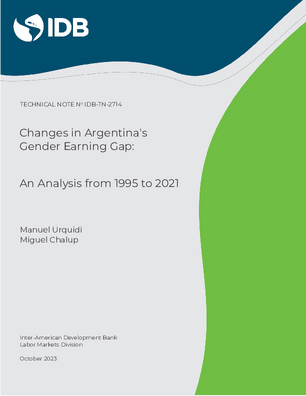Changes in Argentina's Gender Earning Gap: An Analysis from 1995 to 2021
Date
May 2023
The earnings gap between men and women in Latin America is a barrier to achieving gender equality and sustainable development. In Argentina, this gap persists even though in many cases women have a better employment profile than men, suggesting the existence of gender biases. It is also observed that this gap is larger among workers in the informal sector. There is also a heterogeneous earnings difference in favor of men in most occupations. To analyze the gender gap in labor earnings in Argentina between 1995 and 2021, this study uses the permanent household surveys of the National Institute of Statistics and Censuses (INDEC), harmonized by the Inter-American Development Bank (IDB), and presents two methodologies to estimate it: the Blinder-Oaxaca decomposition and the Ñopo decomposition. Although an analysis of over more than two decades, where gender discrimination was verified, a clear trend of reduction or increase in the labor earnings gap between men and women was not observed during the considered period. This indicates that additional efforts are required to understand the observed disparity. The analysis shows that although the total gap has been reduced - as has happened in many other countries in the region - this reduction is generally related to the explained gap and not to a reduction in the unexplained gap, which persists over time.




